- Home
- Quizzes
- My Quiz Activity
- Newsletters
- Sports Betting
- MY FAVORITES
- Add Sports/Teams
- SPORTS
-
NFL
- NFL Home
- Arizona Cardinals
- Atlanta Falcons
- Baltimore Ravens
- Buffalo Bills
- Carolina Panthers
- Chicago Bears
- Cincinnati Bengals
- Cleveland Browns
- Dallas Cowboys
- Denver Broncos
- Detroit Lions
- Green Bay Packers
- Houston Texans
- Indianapolis Colts
- Jacksonville Jaguars
- Kansas City Chiefs
- Las Vegas Raiders
- Los Angeles Chargers
- Los Angeles Rams
- Miami Dolphins
- Minnesota Vikings
- New England Patriots
- New Orleans Saints
- New York Jets
- New York Giants
- Philadelphia Eagles
- Pittsburgh Steelers
- San Francisco 49ers
- Seattle Seahawks
- Tampa Bay Buccaneers
- Tennessee Titans
- Washington Commanders
-
MLB
- MLB Home
- Arizona Diamondbacks
- Atlanta Braves
- Baltimore Orioles
- Boston Red Sox
- Chicago White Sox
- Chicago Cubs
- Cincinnati Reds
- Cleveland Guardians
- Colorado Rockies
- Detroit Tigers
- Houston Astros
- Kansas City Royals
- Los Angeles Angels
- Los Angeles Dodgers
- Miami Marlins
- Milwaukee Brewers
- Minnesota Twins
- New York Yankees
- New York Mets
- Oakland Athletics
- Philadelphia Phillies
- Pittsburgh Pirates
- San Diego Padres
- San Francisco Giants
- Seattle Mariners
- St. Louis Cardinals
- Tampa Bay Rays
- Texas Rangers
- Toronto Blue Jays
- Washington Nationals
-
NBA
- NBA Home
- Atlanta Hawks
- Boston Celtics
- Brooklyn Nets
- Charlotte Hornets
- Chicago Bulls
- Cleveland Cavaliers
- Dallas Mavericks
- Denver Nuggets
- Detroit Pistons
- Golden State Warriors
- Houston Rockets
- Indiana Pacers
- Los Angeles Clippers
- Los Angeles Lakers
- Memphis Grizzlies
- Miami Heat
- Milwaukee Bucks
- Minnesota Timberwolves
- New Orleans Pelicans
- New York Knicks
- Oklahoma City Thunder
- Orlando Magic
- Philadelphia 76ers
- Phoenix Suns
- Portland Trail Blazers
- Sacramento Kings
- San Antonio Spurs
- Toronto Raptors
- Utah Jazz
- Washington Wizards
-
NHL
- NHL Home
- Anaheim Ducks
- Arizona Coyotes
- Boston Bruins
- Buffalo Sabres
- Calgary Flames
- Carolina Hurricanes
- Chicago Blackhawks
- Colorado Avalanche
- Columbus Blue Jackets
- Dallas Stars
- Detroit Red Wings
- Edmonton Oilers
- Florida Panthers
- Los Angeles Kings
- Minnesota Wild
- Montreal Canadiens
- Nashville Predators
- New Jersey Devils
- New York Islanders
- New York Rangers
- Ottawa Senators
- Philadelphia Flyers
- Pittsburgh Penguins
- San Jose Sharks
- Seattle Kraken
- St. Louis Blues
- Tampa Bay Lightning
- Toronto Maple Leafs
- Vancouver Canucks
- Vegas Golden Knights
- Washington Capitals
- Winnipeg Jets
- NCAAF
- NCAAM
- Boxing
- Entertainment
- Lifestyle
- Golf
- MMA
- Soccer
- Tennis
- Wrestling
- More Sports
- RESOURCES
- My Account
- YB on Facebook
- YB on Twitter
- YB on Flipboard
- Contact Us
- Privacy Policy
- Terms of Service

The best seasons by NFL undrafted rookies
A number of players have made important contributions as rookies. Some have done so after going undrafted in 12- or 17-round drafts, others emerging after not being part of seven-round drafts in recent decades. Excluding players who were in the NFL previously but did not play and those who logged extensive time in other significant leagues like USFL 1.0 or the CFL, here are the top seasons from undrafted rookies in the common draft era (1967-present).
25. Tim Cofield, 1986
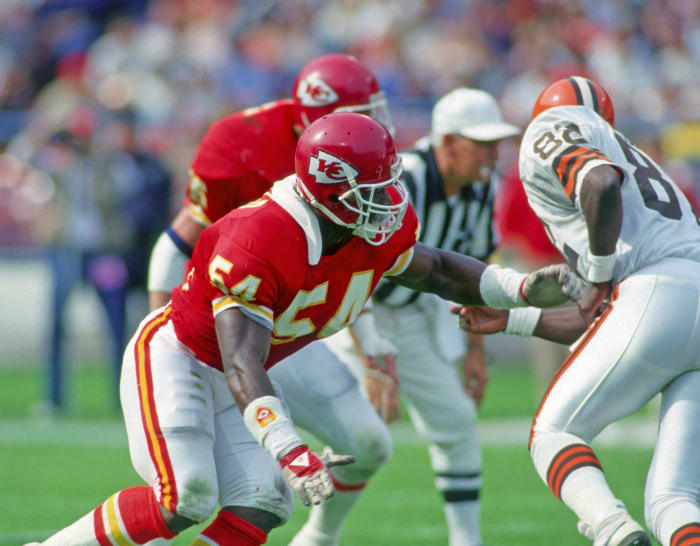
Coming to Kansas City after not hearing his name called in the then-12 round draft, Cofield emerged after playing at a Division II school in North Carolina (Elizabeth City State). The Chiefs liked the Division I-caliber talent enough to give him a starting outside-linebacker job. Although Cofield eventually made his mark in the CFL, he showed potential for the Chiefs as a rookie. Cofield tallied five sacks and forced at least three fumbles for a Chiefs team that booked its first playoff berth in 15 years. Limited by a shaky QB situation, the Chiefs ranked eighth defensively. Cofield landed on the All-Rookie team at season's end.
24. John Sanders, 1974

With the NFL's drafts of the early 1970s consisting of 17 rounds, undrafted players had a much steeper climb to making rosters. Sanders made that climb with his contributions on his first Patriots team. Beginning the season as a backup safety, Sanders became a starting cornerback early in the season. With the Patriots in the early stages of their ascent under Chuck Fairbanks, Sanders intercepted five passes during a 10-start run at corner. The final two came against Earl Morrall, one of which Sanders returned for a touchdown in a season-ending loss to the Dolphins. The South Dakota alum also intercepted Joe Namath and Bert Jones that season.
23. J.C. Jackson, 2018

Attending three colleges, Jackson saw off-field matters lead to undrafted status. The Patriots had already unearthed an undrafted gem at cornerback recently (Jonathan Jones); they found another two years later. The Pats incorporated Jackson into their defense during the season's second half. By December, he became an every-down player for a team finding its stride after an inconsistent — by Patriots standards — regular season. Displaying his ballhawk skills early, Jackson intercepted three passes despite a 47% defensive-snap rate as a rookie. He played nearly every down in the Pats' two AFC playoff tilts and contributed as the Pats became the second team to hold a Super Bowl opponent (the Rams) without a touchdown.
22. Doug Baldwin, 2011

The Seahawks discovered what they had in Baldwin early; the Stanford product elevated their receiving corps immediately. The 2011 season caught the 'Hawks between eras, coming after the team let Matt Hasselbeck walk in free agency and a year before it nabbed Russell Wilson. Stopgap starter Tarvaris Jackson looked in Baldwin's direction often. Baldwin led the team (by a significant margin) with 788 receiving yards, displaying the tenacity for which he became known from the start. Baldwin averaged a career-high 15.5 yards per catch as a rookie, helping Seattle stay in the playoff race until late in Pete Carroll's second season.
21. Thomas Rawls, 2015

Marshawn Lynch sustained two notable injuries in 2015, missing nine games. During much of that span, the Seahawks turned to a much lower-cost investment. During the stretch in which Russell Wilson showed tremendous growth as a passer, Rawls provided a nice complementary presence. Rawls ripped off four 100-yard games, including a 200-yard showing against the 49ers, and led the NFL with 5.6 yards per tote. The Central Michigan alum finished with 830 rushing yards. Making this season more impressive: Rawls totaled more than six carries in just seven games, suffering a broken ankle that ended his season in early December.
20. Raul Allegre, 1983

The Cowboys traded Allegre to the Colts months after signing him, acquiring a ninth-round pick from Baltimore in exchange for the kicker. While the 1983 Colts are best known for the team John Elway spurned, they enjoyed quality kicker play. Allegre hit 30 of 35 field goals, including 4 of 5 from beyond 50 yards, and finished third in the NFL in accuracy rate. Allegre, who later collected a Super Bowl ring as the 1986 Giants' kicker, hit game-winners over the Bears and Eagles as a rookie.
19. Randall Gay, 2004

Pairing Ty Law and Asante Samuel, the defending champion Patriots soon needed help due to a season-ending Law injury. The Hall of Fame-bound cornerback played just seven games in 2004, opening the door for Gay, an LSU product. Primarily working opposite Samuel on the boundary, Gay started nine regular-season games and each New England playoff contest. Gay intercepted two passes as a rookie and returned a fumble for a score against the Browns, helping the Patriots finish 14-2 and repeat as the NFL's No. 1 defense. Although Gay reverted mostly to backup status during his final three Patriot seasons, he started on the best team of the Bill Belichick era.
18. Bobby Johnson, 1984
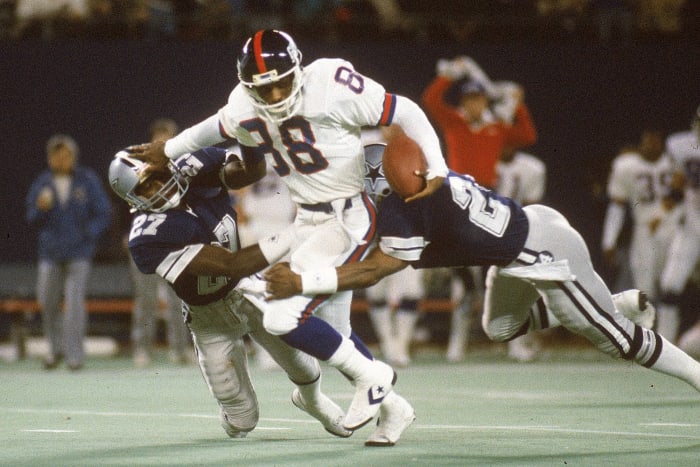
After keeping Phil Simms on the bench throughout 1983, the Giants gave the former top-10 pick his job back in '84. While Earnest Gray was coming off an 1,100-yard season, he failed to follow up that effort. This left Johnson as Simms' top target. The Kansas alum became the Giants' leading receiver in 1984, when Bill Parcells' team returned to the playoffs at 9-7. The 170-pound Johnson posted 795 receiving yards and seven touchdowns. Johnson served notice of his abilities in Week 1, notching an eight-catch, 137-yard, two-TD day in a win over the Eagles. While a drug problem cut Johnson's career short, he made important contributions to Simms' re-emergence as a rookie.
17. Johnnie Gray, 1975
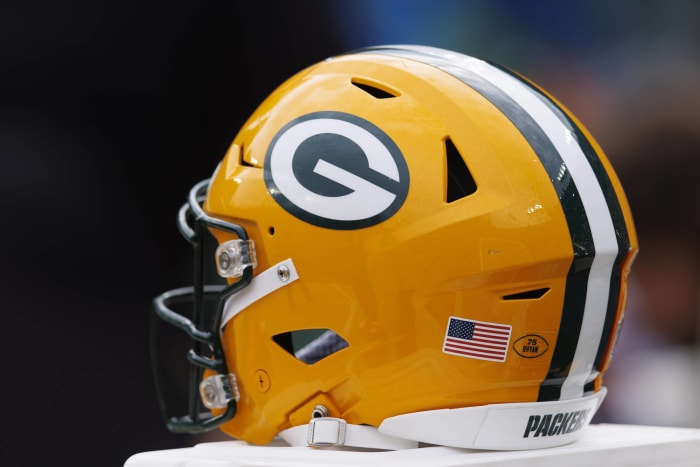
The NFL did not reduce its draft to 12 rounds until 1977; as of 1975, it still consisted of 17 rounds. That made Gray's ascent all the more remarkable. Gray did not need an injury to take place in order to land the Packers' starting job; the team named the Cal State Fullerton alum a starting safety before the season. The hard-hitting underdog zoomed to all-rookie honors, recovering four fumbles for Bart Starr's team. While the Packers went 4-10, they found a long-term starter in Gray, who was a first-stringer throughout his nine-year career. Arriving during a down stretch for the Packers, Gray is in the team's hall of fame.
16. Vontaze Burfict, 2012
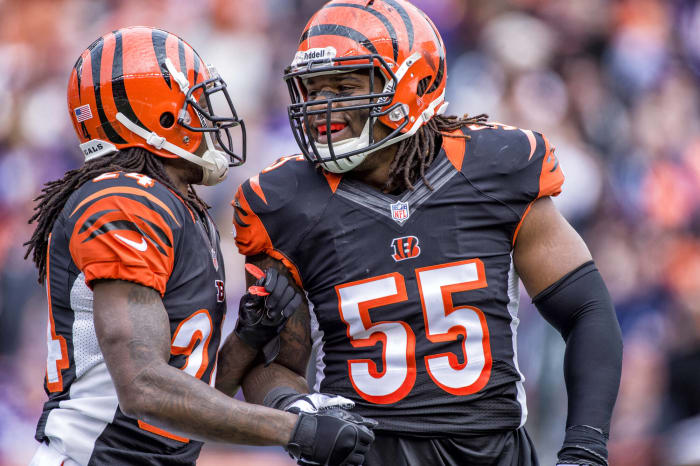
A disastrous Scouting Combine showing dropped Burfict from a player in play to be drafted early to a prospect who fell out of the seven-round draft. Already displaying an issue with personal fouls at Arizona State, the future NFL fine machine lumbered to a 5.09-second 40-yard dash, failed a drug test and bombed during the interview circuit. Known to take a few character fliers, the Bengals found value. Burfict steadied himself and became an immediate starter. Showing the form that had him squarely on draft radars, Burfict posted a team-high 127 tackles (seven for loss) and helped the team to its second-straight playoff berth.
15. Chris Harris, 2011
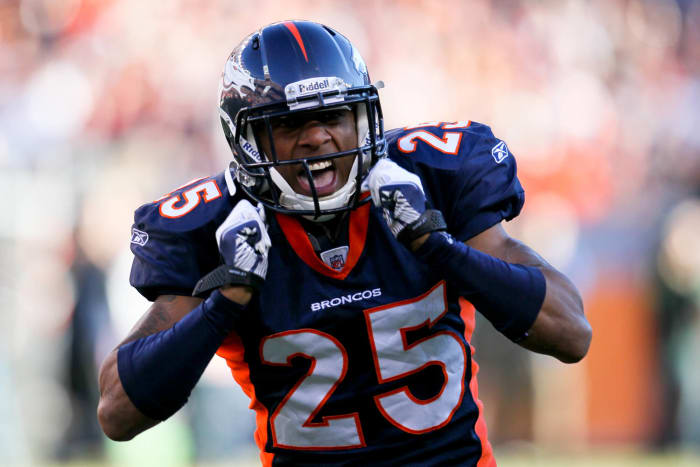
The famed 2011 rookie class made signature contributions to the cornerback position. Patrick Peterson and Richard Sherman have the best Hall of Fame chances, but Chris Harris' efforts did the most to change the game. That trajectory began during Harris' rookie year, when the Broncos plugged the Kansas alum in alongside Champ Bailey. Denver used Harris primarily in the slot, foreshadowing an All-Decade career and an NFL shift. Harris was initially valuable on a defense tasked with keeping the Broncos in games to allow for Tim Tebow awakenings. This group helped Denver venture to the divisional round. Almost definitely the NFL's greatest slot corner, Harris' ensuing ascent elevated the slot position's stature.
14. James Jett, 1993
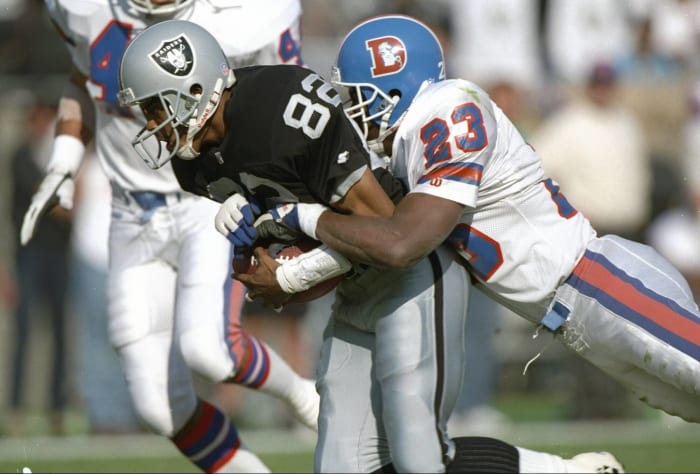
The speed-obsessed Al Davis found one of the best track/football dual threats in Jett, who made a name for himself before debuting in Los Angeles. The West Virginia alum ran in both prelim heats of the 4x100-meter relay during the Barcelona Olympics, before Team USA sat Jett for aging sprint legend Carl Lewis in the final. Jett collected a gold medal for his work and became Tim Brown's top complement soon after. Joining a Raiders team that already rostered famed Notre Dame speedster Rocket Ismail and former world-class hurdler and 1983 4x1 gold medalist Willie Gault, Jett led the NFL with 23.4 yards per catch. After a 771-yard regular season, the 165-pound weapon posted 111 yards and a TD in the Raiders' wild-card win over the Broncos.
13. Sammy Knight, 1997
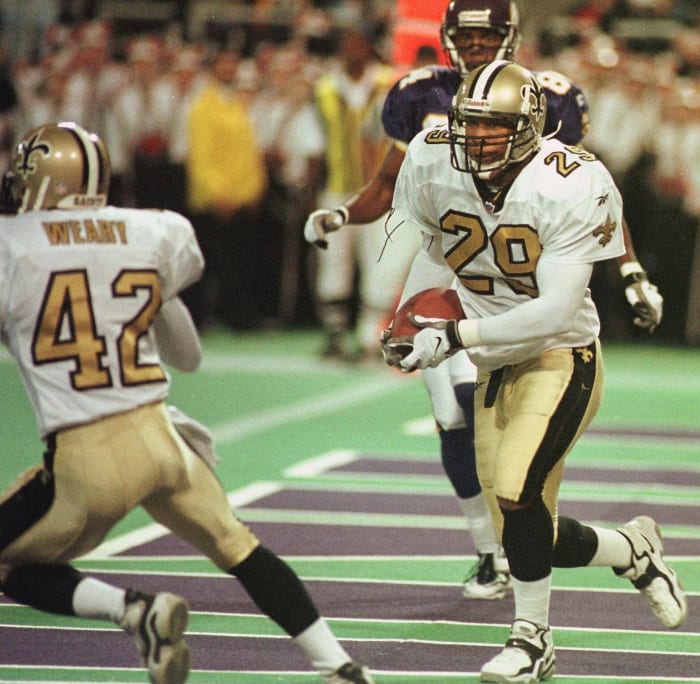
Playing both safety and linebacker at USC, Knight saw positional uncertainty contribute to his slide out of the draft. The Saints scooped him up and quickly found a long-term starter. Mike Ditka's team inserted Knight into the lineup five games into the season; Knight held that spot for six years. Replacing veteran Anthony Newman, Knight intercepted five passes as a rookie. This included a two-INT game, a narrow Saints win over the reigning NFC West champion Panthers. Later inducted into the Saints Hall of Fame, Knight finished second to Baltimore pass rusher Peter Boulware for Defensive Rookie of the Year honors.
12. Phillip Lindsay, 2018
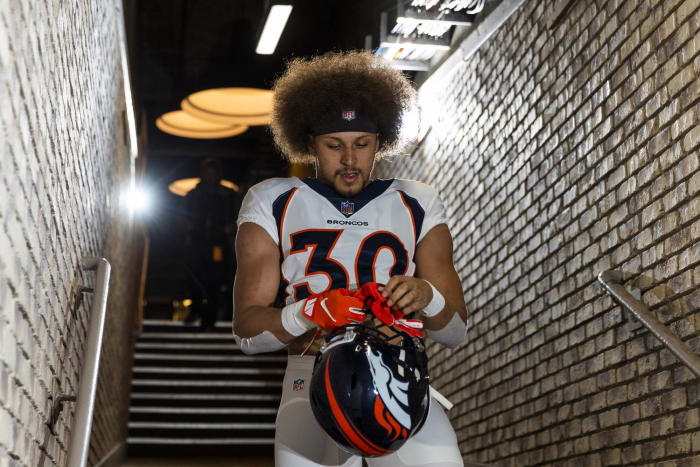
More of a local flier than someone viewed as a likely starter, Lindsay quickly showed he was the best running back on the Broncos' roster in Week 1. Lindsay totaled 102 scrimmage yards and scored in his debut; the Denver native soon overtook third-round rookie Royce Freeman to be the Broncos' lead back. The explosive ball carrier surpassed 1,000 rushing yards (1,037) despite missing the team's season finale. Lindsay averaged 5.4 yards per carry, scored 10 touchdowns and earned a Pro Bowl invite. The ex-Colorado Buffalo remains the only running back in NFL history to go undrafted and begin his career with two straight 1,000-yard seasons.
11. LeGarrette Blount, 2010

Known for the postgame punch he threw at a Boise State player upon entering the NFL, Blount found himself on the waiver wire just before his rookie season. The Titans cut the Oregon alum, leading the Buccaneers to make a claim days before Week 1. Tampa Bay turned to Blount as its top back after giving Cadillac Williams another chance. While the injury-prone veteran stayed healthy in 2010, he struggled. The rookie took over, finishing with 1,007 yards despite starting just seven games. The physical back reached 1,000 despite totaling 30 yards from Weeks 1-5, helping a Josh Freeman-led team to a rather fluky 10-6 season.
10. Ryan Stonehouse, 2022
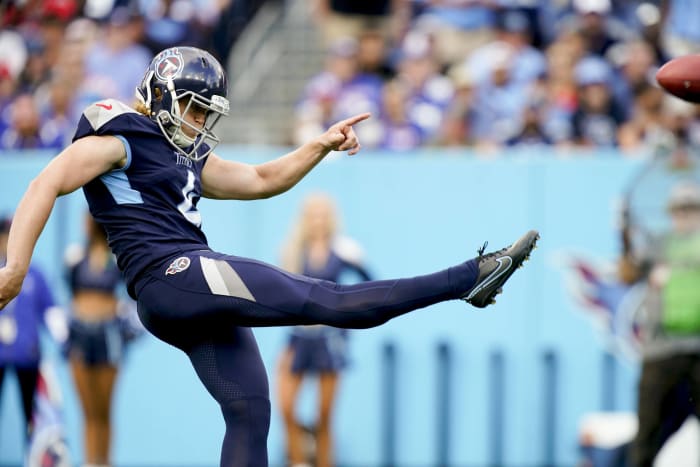
Although the Titans are making changes post-Mike Vrabel, Stonehouse remains in the team's plans because of his 2022 showing. The Colorado State product brought down a record that had stood since 1940. Sammy Baugh's single-season punting mark outlasted Ray Guy, Shane Lechler and a few generations of punters. Stonehouse not only broke it; he eclipsed it by nearly two yards. Baugh's 51.4 average now sits third on the all-time list, behind Stonehouse's 2022 and 2023 numbers. Stonehouse averaged 53.1 yards per punt in each year. He received second-team All-Pro acclaim in 2022.
9. Herm Edwards, 1977
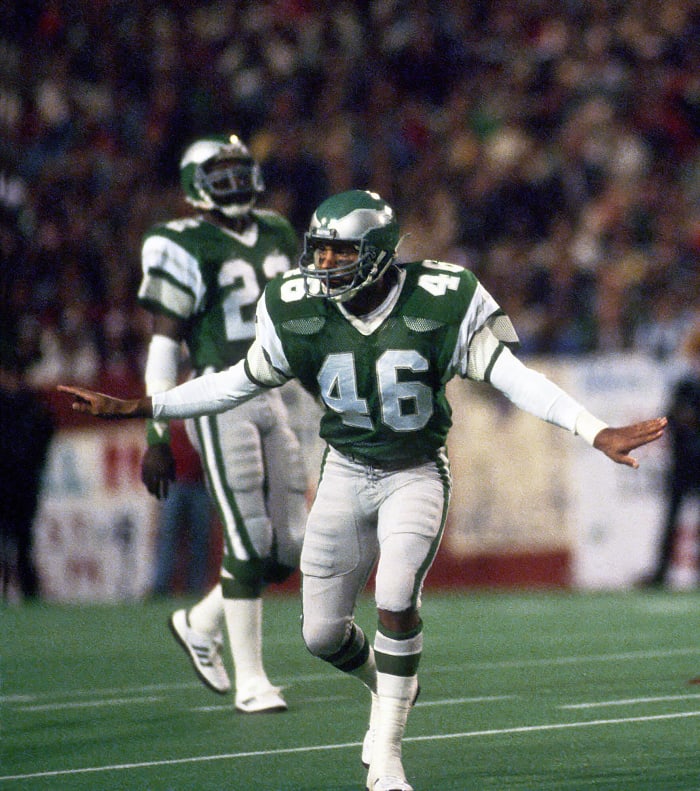
The future sideline and broadcasting mainstay made a quick ascent in Philadelphia and did not look back. Undrafted out of San Diego State, Edwards secured a spot in the Eagles' starting lineup during the preseason. The New Jersey native intercepted six passes as a rookie; five of those came during Philadelphia's final seven games. The Eagles drafted DBs with three of their first four picks in 1977, but Edwards became the prize. The future Jets and Chiefs head coach, whose "Miracle in the Meadowlands" scoop occurred in his second season, started every Eagles game through the 1985 season. He finished with the second-most INTs (33) in franchise history.
8. Dominic Rhodes, 2001
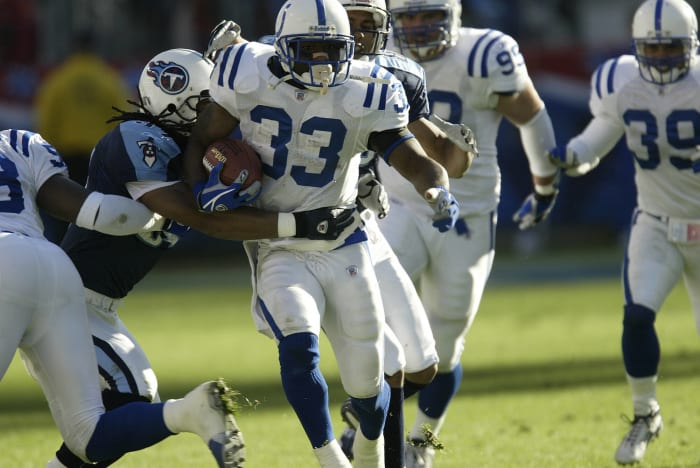
While Rhodes needed an injury to impact the Colts' depth chart in order to show his best stuff, he remained a key player for the team well after Edgerrin James recovered. Indianapolis' standout back and a future Hall of Famer, James suffered a torn ACL six games into the 2001 season. Enter Rhodes, a backup out of Division II Midwestern State (Texas). Despite starting only 10 games, Rhodes finished with 1,104 rushing yards and nine touchdowns. Rhodes took just six handoffs before James' Week 6 injury; he finished the season with five 100-yard performances. Rhodes outlasted James with the Colts, playing a key role in their Super Bowl XLI win five years later.
7. James Robinson, 2020

Two years after Lindsay changed the Broncos' backfield equation, the Jaguars turned to a UDFA to lead their RB corps. The team waived former No. 4 overall pick Leonard Fournette just before the season and soon turned Robinson loose. The Illinois State product became the best facet of a miserable Jaguars team, rushing for 1,070 yards and finishing with 10 total TDs. Robinson's 1,414 yards from scrimmage remain the record for an undrafted rookie. He reached that total despite being rested in the season's final two games, as the 1-15 Jags closed in on the 2021 No. 1 pick, which became Trevor Lawrence.
6. Michael Downs, 1981
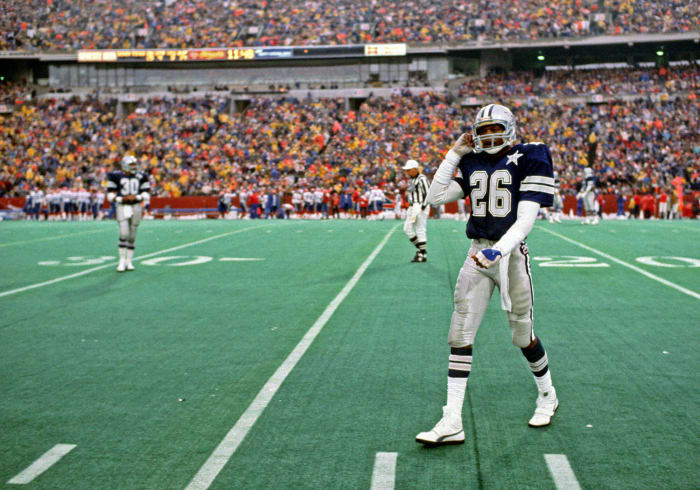
Still a vaunted operation as the Danny White years began, the Cowboys rolled out a secondary featuring two rookie UDFA starters. In addition to cornerback Everson Walls, Dallas deployed Downs at safety. The Rice alum played hurt as a senior in college, leading to his fall out of the draft. Downs won a Cowboys starting job in training camp and intercepted seven passes. With Walls' patrol vexing QBs regularly and Dennis Thurman adding nine picks, Downs' INT total was just third on his own team. Dallas led the NFL in thefts that year. Downs, who became an eight-year starter, added an eighth pick in the Cowboys' 38-0 divisional-round rout over the Buccaneers.
5. Justin Tucker, 2012

During an era in which drafted kickers have regularly busted, the Ravens found the best to ever do it amid post-draft free agency chaos. Baltimore signed Tucker out of Texas, and he became an important part of the team's second Super Bowl-winning campaign. Tucker went 30-for-33 during the regular season, making all four of his 50-plus yard kicks. In the postseason, the part-time opera singer was 4-for-4. This included a game-winning 47-yard try in subzero temperatures — a make that probably deserves more appreciation — breaking a double-overtime tie in Denver, and a 38-yarder that became the game-winner over the 49ers in the Harbaugh Bowl.
4. Joe Jacoby, 1981

The 1981 offseason proved to be one of the most important in offensive-line annals. Two long-running "Hogs" arrived in Washington. The team chose future Hall of Fame guard Russ Grimm in the third round and found Jacoby as an undrafted free agent. Jacoby's 6-foot-7, 295-pound frame stood out for the era, and Washington plugged the Louisville product in at left tackle quickly. Blocking for Joe Theismann and John Riggins, Jacoby started 13 games and made the All-Rookie team. That year also featured the arrival of Lawrence Taylor, whom Jacoby would be battling throughout his career. "The Hogs" quickly became one of the great O-lines in NFL history.
3. Brandon Aubrey, 2023
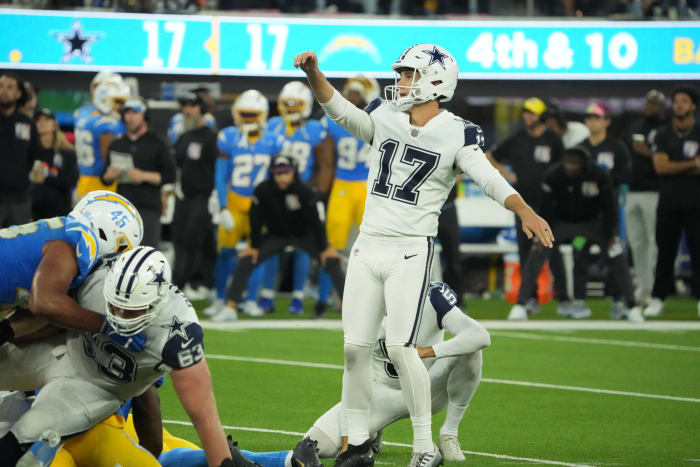
Yes, Aubrey played two seasons in the rebooted eight-game USFL. But Aubrey did not even play college football, instead attempting a soccer career after being an MLS draftee. This is far from a veteran who gained extensive seasoning in the CFL. Aubrey made his first 35 field goals, finishing the season 36-for-38. Sailing to All-Pro honors, the Notre Dame alum did so after making 10 50-plus-yarders. Aubrey made 59- and 60-yarders in a showcase game against the Eagles, rewarding the Cowboys for the flier they took in an effort to upgrade on Brett Maher.
2. Clark Gaines, 1976
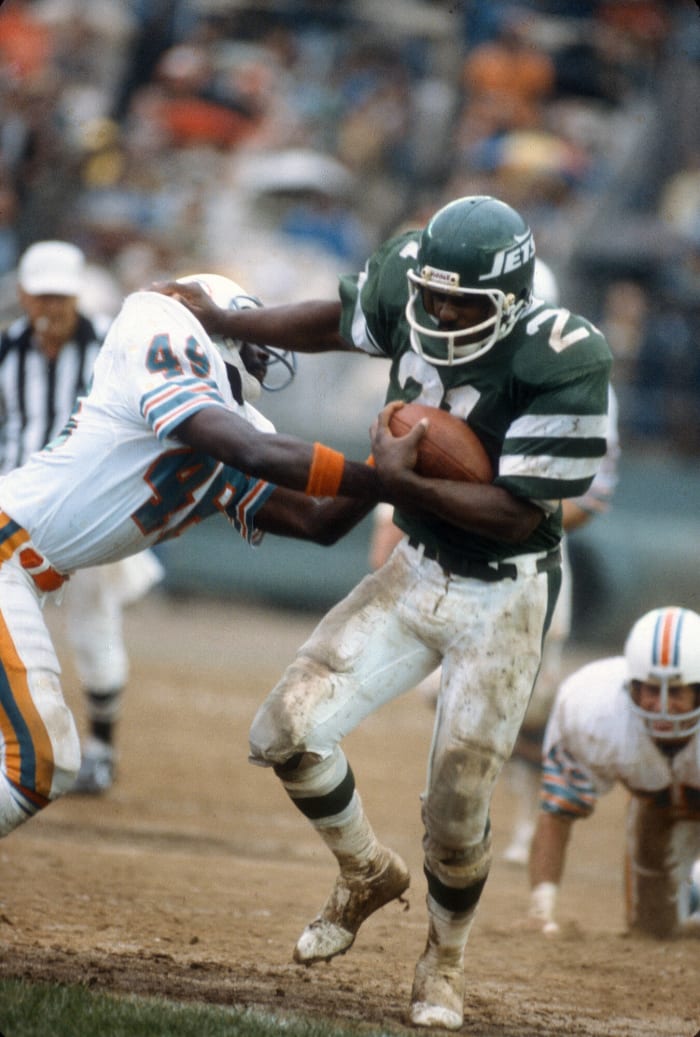
A seldom-used backup during much of the season's first half, Gaines made "Monday Night Football" garbage-time reps count. An injury to starter Ed Marinaro ushered in Gaines, who barely made the team out of Wake Forest. Joe Namath found Gaines for a short TD against the Patriots, and the Jets kept him in the backfield the rest of the way. The Jets, who saw John Riggins leave for Washington earlier in 1976, received steady production from Gaines. Racking up four 100-yard rushing games from Week 7 onward, Gaines finished with 1,124 scrimmage yards to earn Jets MVP honors — granted, in a dreadful season that saw Lou Holtz quit midway through — and NFLPA AFC Rookie of the Year acclaim.
1. Everson Walls, 1981
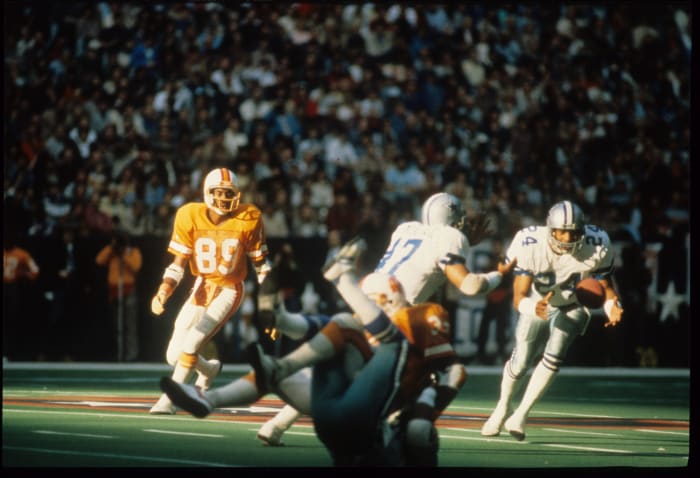
It took 40 years for anyone to match the production Walls offered as a rookie. The Grambling product joined Michael Downs as rookie UDFA starters in Dallas' secondary, but Walls stole the show with an NFL-most 11 INTs en route to the Pro Bowl. The 6-foot-1 corner started throughout for the 12-4 Cowboys, who received two more turnover actions from Walls in the playoffs. Walls intercepted Joe Montana twice in the NFC championship game, and while that contest is better known for its ending — when Dwight Clark outleapt Walls to make "The Catch" — the young corner showed his rookie year was no fluke by leading the NFL in INTs again in 1982. Only one player — fellow Cowboy Trevon Diggs — has reached the 11-INT plateau in a a season since.
Sam Robinson is a Kansas City, Mo.-based writer who mostly writes about the NFL. He has covered sports for nearly 10 years. Boxing, the Royals and Pandora stations featuring female rock protagonists are some of his go-tos. Occasionally interesting tweets @SRobinson25.
More must-reads:
- The most memorable seasons by NFL backup quarterbacks
- The best NFL teams that never made it to a Super Bowl
- The 'Most career passing touchdowns' quiz
Breaking News
Customize Your Newsletter
 +
+
Get the latest news and rumors, customized to your favorite sports and teams. Emailed daily. Always free!
Use of this website (including any and all parts and
components) constitutes your acceptance of these
Terms of Service and Privacy Policy.

